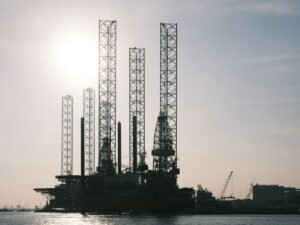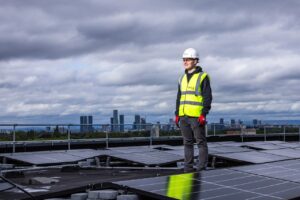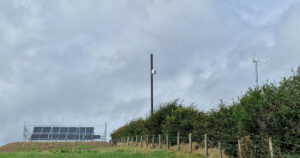Council prepares for Clean Break and a renewable future
 There was a time when the port of Grimsby was known throughout the land as the epicentre of the British fishing industry.
There was a time when the port of Grimsby was known throughout the land as the epicentre of the British fishing industry.
The fishing ships still use the port, but in recent years it has also become home to a growing number of companies involved with the burgeoning offshore wind energy sector, including Dong Energy UK, Siemens and Centrica.
And now North East Lincolnshire Council is hoping to build on its recent successes and turn Grimsby and the surrounding area around the Humber into a centre of excellence for the British renewable energy industry.
The council is holding a two-day conference – Clean Break – later this month to help showcase its vision of a low-carbon and renewable future for the area, with a special focus on offshore wind and district heat.
Speaking to Environment Journal, the council’s investment manager, David Robinson, says the port of Grimsby has now become the operations and maintenance centre for the UK’s offshore wind industry.
‘We have 500 jobs here that are directly dependent on offshore wind, that were not there seven years ago,’ says Mr Robinson.
‘In terms of offshore wind, the potential is not potential anymore. It is reality and it is only going to grow.’
Mr Robinson adds that Dong Energy UK’s investment has ‘physically transformed’ parts of the old fishing docks.
‘When you look at what has happened in the southern North Sea in regard to offshore wind, it is still relatively small scale, but when the Hornsea wind farm comes online, offshore wind will go to an industrial scale.
‘At this point of time, you are looking at moving from hundreds of turbines to thousands.’
A growing ‘energy estuary’
Mr Robinson says the Humber has been dubbed the ‘energy estuary’ for some time. Further up the river there are two oil refineries at the Port of Immingham, which can process about a quarter of the UK’s road fuel.
Immingham is also home to the biggest biomass handling facility in the world, which was established to service the Drax power station in North Yorkshire since it was converted from coal to biomass.
‘But in terms of our investment pipeline, we have 10 significant investment opportunities, which are at various stages of development.
‘We are going to be producing an awful lot of power in the green arena over the next five years,’ says Mr Robinson. ‘A good number of people will be employed and this will equate to hundreds of million of pounds of investment.
‘This will set a real marker down for this area as a real hotspot for energy production, going forward.’
The borough also has more than 200ha of enterprise zones, which are able to business rate relief or capital allowances to potential investors and companies looking to start up or move to the area.
There has also been significant investment locally in education, training and research facilities in order to create a highly-skilled workforce, capable of meeting the future needs of the growing renewables sector.
For example, the Grimsby Institute’s £7.5m investment in the development of MODAL will create a new centre of excellence for the delivery of training for the ports, logistics and energy sectors.
The Centre for the Assessment of Technical Competency (CATCH) has also invested £3.9m in a new training facility, CATCH Energy Offshore and the Humberside Engineering Training Association is helping to upskill people already in the workforce and apprentices about the enter the market.
Trickle-down benefits
Mr Robinson says many of the marine engineering businesses, who used to service the fishing industry are now doing business with the offshore wind sector.
‘We believe that the engineering businesses have seen anything up to 25% increase in turnover based on the arrival of the wind industry,’ he adds.
‘The trickle-down effect does happen. We have people staying in local hotels. Local restaurants and taxi firms are all picking up on the opportunity for increased trade as well.
‘The very real impact is you are seeing actual regeneration and development, particularly in the fish dock,’ he explains. ‘If you had gone down there five years ago, you would have seen a very different place.
‘From my perspective, anything that brings big hitters onto our patch has to be a good thing. We could be viewed as being at the end of the line in some respects. We are a coastal town and not a city. But we have an international name in the areas we are active in.’















